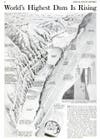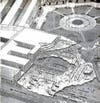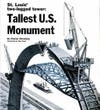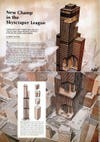We’ve heard it said that Rome wasn’t built in a day. And while Popular Science isn’t old enough to have witnessed the Colosseum going up, we have covered in our pages some of the 20th century’s most important architectural achievements rise from nothing but a dream and a blueprint.
We’ve combed the archives to gather some of our most important first looks at the buildings and structures that went on to define skylines around the world.
Click to launch the photo gallery
Considering the extent to which suspension bridges, skyscrapers, and towering monuments have become symbols of human progression, it’s hard to believe that just a hundred, even fifty years ago, our most beloved landmarks only existed as blueprints dreamed up by earnest young engineers. Mount Rushmore had no faces on it. Commuters in San Francisco still rode ferries across the Bay. So-called towering skyscrapers rose only thirty floors.
In 1927, when New York’s 57-story Woolworth Building was still the world’s tallest high-rise, we continued to ponder the mechanics of installing elevators for high-rises. “Forty thousand people within four walls!” we exclaimed. “Edison and others warn us against threatening chaos.”
At times, the process of planning and construction did involve a lot of chaos. Hundreds of workers died while building the Hoover Dam. Even Mount Rushmore’s main sculptor, Gutzon Borglum, didn’t live to see his masterpiece completed.
Needless to say, finishing projects was no easy feat, so we combed our archives to see how engineers turned empty lots, untended fields, and undisturbed bedrock into the past century’s most iconic man-made structures.
Launch the gallery for PopSci’s first looks at the Empire State Building, the Pentagon, and more.
Cutting Through the Panama Canal: April 1916
After a failed attempt by the French, U.S. construction on the Panama Canal began in 1904 and ended in 1914. President Theodore Roosevelt commissioned George Washington Goethals as Chief Engineer, while Ellicott Dredges developed machines that could cut through the seabed. Two years after the canal formally opened, we published a story on Colonel Goethals’ efforts to prevent erosion. Workers used the Cascadas dredge, pictured left, to scoop out excess earth from the canal’s problem areas. Engineers in Germany designed the backhoe-equipped machine especially for use in the Panama Canal. In 1916, the Cascadas was the world’s largest all-steel dredge and could dig out seventeen thousand wagonloads of dirt in a day. Read the full story in “Digging Away the Slides at Panama”
Channel Tunnel, Europe’s Underwater Railway: November 1925
The Channel Tunnel, which provides convenient passageway between the U.K. and France, underwent almost two centuries of planning before it opened 1994. Although construction on the Channel as we know it began in 1988, people living in past decades continually believed that the project would finish in their lifetimes. We even published an article in 1923 claiming that a 120 year-old dream was near completion. Two years later, we covered a plan by Commandant Veyrier, a French engineer, to build a railroad on top of the bedrock instead of boring through it. (Spoiler alert: It didn’t pass.) Read the full story in “Submarine Trains to Run on Stilts?”
New York’s George Washington Bridge: April 1926
The George Washington Bridge, which stretches across the Hudson River, connects Manhattan’s Washington Heights neighborhood to Fort Lee in New Jersey. Famed architect Cass Gilbert and Othmar Ammann, the bridge’s chief engineer, worked on it between 1927 and 1931. In 1926, we estimated that the bridge would span 3,468 feet and carry 12 million cars a year. Today, it accommodates 106 million vehicles annually and extends a total length of 4,670 feet. Apparently, “The Greatest Bridge in the World” turned out greater than expected. Read the full story in “The Greatest Bridge in the World”
Scaling the Empire State Building:January 1931
Working on the country’s beloved landmark was not for the faint of heart, as evidenced by our coverage of daily life on the girders. We published these pictures of the Empire State Building’s construction just four months shy of its official opening. Excavation on the site began in 1930, and and for 40 years afterward, New Yorkers enjoyed the skyscraper’s status as the world’s tallest building. Read the full story in “Higher than Man Ever Built Before”
Carving Out Mount Rushmore: March 1931
Mount Rushmore was conceived by South Dakota historian Doane Robinson, who wanted to boost state tourism by carving the faces of celebrities onto the side of a mountain. Artist Gutzon Borglum, however, decided to focus on a more national theme by depicting the faces of four U.S. presidents. Borglum began sculpting the Black Hills in 1927, but died before the project finished in 1941. This photo shows Borglum, standing second to the left on the scaffolding, as he inspects the work on George Washington’s 60-foot high profile. Although we reported that the carvings would depict presidents from head to waist, insufficient funds forced the project to end early. Read the full story in “Carving a Mountain Top into a Mighty Statue”
The Golden Gate Bridge: March 1931
In 1931, we rejoiced that “San Francisco, isolated for years on a narrow peninsula, [would] be linked at last to the mainland.” After decades of doubt over the feasibility of building the Golden Gate, Joseph Strauss, a young engineer, assured doubtful authorities that he could come up with a safe and practical suspension bridge. Architect Irving Morrow assisted Strauss by coming up with tower designs and the lighting. The pictures shown left were based on official plans, which called for six traffic lanes and high-speed elevators in towers as tall as New York’s Woolworth Building. According to our diagrams, the bridge’s iconic orange finish was originally silver. Construction began in 1933 and was finished in 1937. Read the full story in “San Francisco to have World’s Greatest Bridges”
Construction Begins on the Hoover Dam: June 1931
The Hoover Dam, which cost over a hundred lives during its construction, was at the time of its construction one of the most challenging engineering projects ever undertaken. Early attempts at damming the Colorado began in the late 19th century, but real work on the structure occurred between 1931 and 1936. At the time, no one had ever attempted a construction comparable in size, but workers and engineers still finished the project two years early. In 1931, we reported plans for a town for housing workers, which eventually became Boulder City, Nevada. Read the full story in “World’s Highest Dam is Rising”
Mapping the Pentagon: February 1943
The Pentagon, which we referred to as “a modern city within a building” and the “nerve center of the fighting forces,” opened in 1943. Just a month after its dedication, we ran an extensive feature on the building’s unique design and “maze of passageways.” With its mile-long circumference the Pentagon is still the world’s largest office building by floor space. Back in 1943, the building set an additional record by employing 300 operators for the world’s largest private branch switchboard. Read the full story in “Nerve Center of the Fighting Forces”
The NYC Subway System: July 1952
By 1952, the New York City subway was the world’s most efficient underground railroad. “No other transportation system hauls–and mauls–so many people so far so fast,” we said in an article covering proposals for the Long Island Railroad, a subway to New Jersey, and a Second Avenue line (which, even now in 2010, still resembles a pipe dream more than an actual plan). In the early 1950s, the NYC subway was called the “world’s cheapest train ride,” while the caption of this photo reads, “Where you can go for a dime.” If only that were still the case. Read the full story in “The Great Subway Maze is Still Growing”
St. Louis’ Gateway Arch: April 1964
The Gateway Arch, which was built between 1963 and 1965, commemorates St. Louis’ role in the United States’ westward expansion following the Louisiana Purchase of 1803. Today, the structure is still the tallest monument in the United States. Click through to see several cutaway diagrams explaining how trains would transport visitors to the top of the arch. Read the full story in “St. Louis’ two-legged tower: Tallest U.S. Monument”
Sears Tower Sets a New Record: March 1972
At the time of its unveiling, Sears Tower (now called Willis Tower) was the world’s tallest building. Sears executives began planning the building in 1969, while architectural firm Skidmore, Owings and Merrill employed a modular tube design, the first of its kind for a skyscraper. Read the full story in “New Champ in the Skyscraper League”
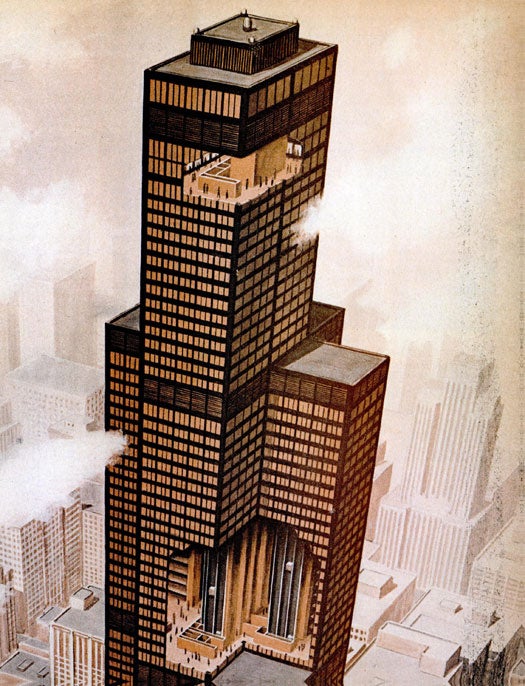
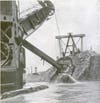
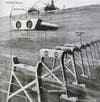
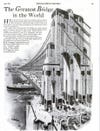
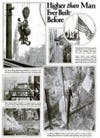
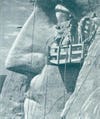
![In 1931, we rejoiced that "San Francisco, isolated for years on a narrow peninsula, [would] be linked at last to the mainland." After decades of doubt over the feasibility of building the Golden Gate, Joseph Strauss, a young engineer, assured doubtful authorities that he could come up with a safe and practical suspension bridge. Architect Irving Morrow assisted Strauss by coming up with tower designs and the lighting. The pictures shown left were based on official plans, which called for six traffic lanes and high-speed elevators in towers as tall as New York's Woolworth Building. According to our diagrams, the bridge's iconic orange finish was originally silver. Construction began in 1933 and was finished in 1937. Read the full story in "San Francisco to have World's Greatest Bridges"](https://www.popsci.com/uploads/2019/03/18/XXNDI2NKZMXJYFPB2EHUEPXKKA.jpg?auto=webp&optimize=high&width=100)
